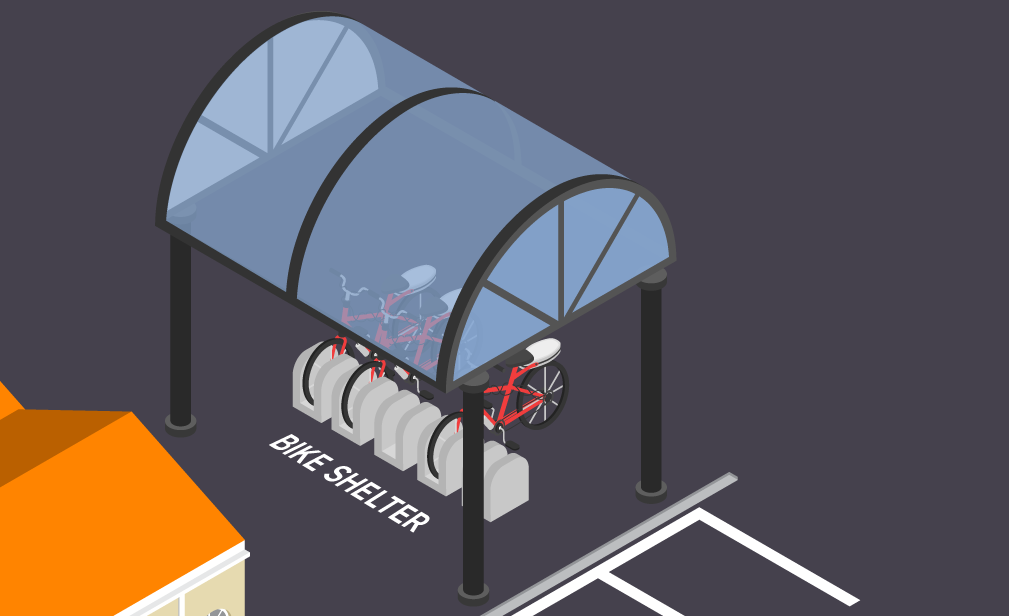As cities and urban environments evolve to accommodate more sustainable modes of transportation, the demand for bicycle parking areas has grown significantly. With people increasingly opting for bicycles over cars for their daily commutes, it's essential to create well-organised, clearly marked spaces dedicated to bike parking. Bicycle areas and sheds, which can be found near workplaces, public transport hubs, shopping centres, and residential complexes, ensure that cyclists have secure and convenient places to leave their bikes.
The Importance of Bicycle Parking Areas
As cycling becomes a more popular form of transportation, the organisation of parking areas for bikes is crucial for several reasons:
- Organising Bike Traffic: Dedicated bicycle areas ensure that bikes are parked neatly and out of the way, whilst keeping the spaces easily accessible.
- Reducing Pavement Clutter: In busy urban areas, poorly parked bikes can create unnecessary clutter. This can be both an eyesore and an inconvenience for pedestrians, particularly in high-traffic locations. Designating specific areas for bike parking helps to keep public spaces tidy and functional.
- Security: Bicycle sheds or designated parking areas provide cyclists with safe, visible places to lock up their bikes. The concentration of bikes in a specific area also deters theft, as bike racks are typically located in well-lit, public spaces or even within secure enclosures. Covered shelters also protect bikes from the elements.
- Promoting Cycling: When cyclists know that there are designated areas to park their bikes, it encourages more people to choose cycling as a viable transportation option. This not only promotes healthy living but also reduces traffic congestion and contributes to environmental sustainability.

Marking Bicycle Areas: Clear, Efficient, and Durable Solutions
To ensure that cyclists can easily identify parking areas and adhere to the parking structure, clear and durable markings are essential. Thermoplastic markings are the most common solution for this, as they offer longevity and resistance to wear, particularly in high-traffic environments.
Here’s how bike parking areas are typically marked:
- Bike Symbols: Ground markings often include a clear bicycle symbol to indicate the purpose of the space. These symbols are typically applied using thermoplastic material for durability, especially in outdoor areas that are exposed to weather and heavy use. The symbols are either white or yellow, colours that are highly visible on various surfaces, ensuring that the designated purpose of the area is clear to all.
- Individual Slots: In some cases, lines may be used to mark individual parking slots or areas where bike racks are installed. These lines help organise the parking area, ensuring that bikes are stored efficiently without taking up excessive space. Again, thermoplastic rolls of lines are an effective way to apply these markings, as they can be easily installed and provide long-lasting visibility.
- Colour Coding: Bicycle areas are often marked with specific colours—commonly green or white. Green markings can be used to make the area stand out, signalling that it's a designated space for cyclists. White lines and symbols, on the other hand, provide a clean, minimal aesthetic while still ensuring that the area is well-marked and easily visible.
The Role of Thermoplastic Markings in Bicycle Areas
Using thermoplastic markings for bicycle areas offers numerous advantages, especially in terms of durability and ease of application.
- Durability: Thermoplastic markings are weather-resistant and can endure the wear and tear of bikes being parked, locked, and moved on a daily basis. This makes them particularly suitable for outdoor bike parking areas that are exposed to the elements.
- Ease of Installation: Pre-formed thermoplastic rolls or strips are quick to install, allowing for minimal disruption to public spaces during application. These markings can be applied to concrete, asphalt, or other surfaces typically found in urban environments.
- Cost-Effective: While thermoplastic markings are more durable than paint, they also offer a cost-effective solution in the long term. Their long lifespan reduces the need for frequent maintenance or reapplication, making them an ideal choice for bike parking areas that are in constant use.
Conclusion
Bicycle areas and sheds are essential components of modern urban infrastructure, providing safe, organised spaces for cyclists to park their bikes. With the growing popularity of cycling, these areas help to reduce clutter, promote cycling, and ensure that bike traffic is managed efficiently. Clear, durable markings, particularly those made from thermoplastic, are a key element in making these areas functional and easy to navigate for cyclists.
By integrating well-marked and secure bicycle parking areas into urban planning, cities can further encourage cycling as a sustainable mode of transportation, benefiting both the environment and public health. Whether you're installing a large bike shed or simply marking a few parking spaces, using high-quality materials like thermoplastic ensures that the area remains clear, organised, and effective for years to come.